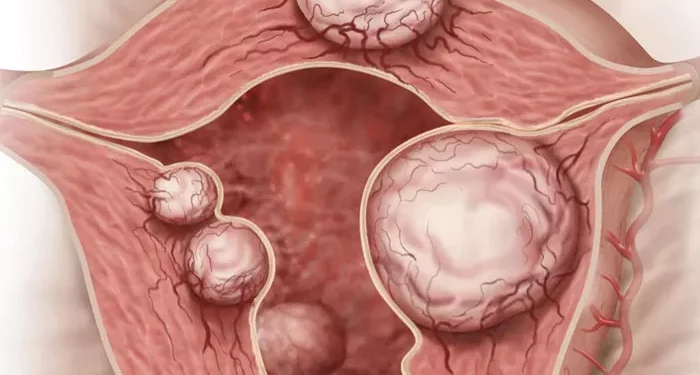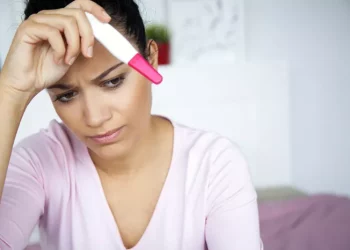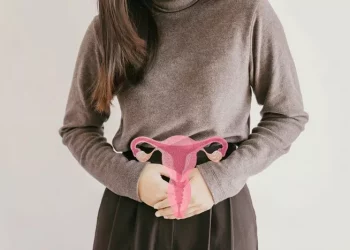Fibroids, also known as leiomyomas or myomas, are benign (non-cancerous) tumors that arise from the muscle tissue of the uterus. While fibroids most commonly develop within the uterine wall, they can also grow outside the uterus. When fibroids are located outside the uterus, they are referred to as subserosal fibroids. This article explores the potential link between subserosal fibroids and infertility, examining the mechanisms by which these fibroids can impact reproductive health and discussing available treatment options.
See Also: Uterine Fibroids and Fertility: Impact and Considerations
What Are Fibroids?
Fibroids are common among women of reproductive age. These growths are made up of muscle cells and other tissues that form a mass. While the exact cause of fibroids is unknown, several factors may contribute to their development, including genetics, hormones, and environmental influences.
Fibroids are categorized based on their location within the uterus:
Intramural Fibroids: Located within the muscular wall of the uterus.
Submucosal Fibroids: Protrude into the uterine cavity.
Subserosal Fibroids: Extend beyond the uterine wall and grow on the outer surface of the uterus.
Pedunculated Fibroids: Attached to the uterus by a stalk-like structure.
Each type of fibroid can cause different symptoms and health issues. Subserosal fibroids, the focus of this article, grow outside the uterus and can range in size from small nodules to large masses.
Symptoms of Subserosal Fibroids
Subserosal fibroids often cause different symptoms compared to fibroids located within the uterine wall or cavity. Some women with subserosal fibroids may not experience any symptoms at all, while others might have noticeable issues, including:
Pelvic Pain or Pressure: Large subserosal fibroids can exert pressure on surrounding organs, causing pain or a sensation of fullness in the pelvic area.
Frequent Urination: If a fibroid presses on the bladder, it can lead to increased frequency of urination or difficulty emptying the bladder completely.
Constipation: Pressure on the rectum can cause constipation or difficulty with bowel movements.
Back or Leg Pain: In some cases, fibroids can press on nerves, leading to pain that radiates to the back or legs.
Unlike fibroids located within the uterine cavity, subserosal fibroids are less likely to cause heavy menstrual bleeding or irregular periods.
Can Subserosal Fibroids Cause Infertility?
The relationship between fibroids and infertility is complex and not entirely understood. However, there is evidence to suggest that subserosal fibroids can impact a woman’s ability to conceive and carry a pregnancy to term. The mechanisms by which subserosal fibroids may cause infertility include:
Anatomical Distortion: Large subserosal fibroids can alter the shape of the uterus or pelvis, potentially affecting the position of the fallopian tubes or ovaries. This distortion can interfere with the movement of sperm, egg, or embryo, hindering fertilization or implantation.
Tubal Blockage: Although less common, subserosal fibroids can compress the fallopian tubes, leading to partial or complete blockage. This blockage prevents sperm from reaching the egg or the fertilized egg from traveling to the uterus.
Impaired Blood Flow: Fibroids can impact the blood flow to the uterus and surrounding tissues. Poor blood circulation can affect the endometrial lining’s ability to support implantation and early embryo development.
Inflammation: The presence of fibroids can trigger an inflammatory response in the pelvis, creating a hostile environment for sperm and embryos. Chronic inflammation can also lead to the formation of scar tissue (adhesions), which can further complicate conception.
Diagnosis of Subserosal Fibroids
Diagnosing subserosal fibroids involves a combination of medical history, physical examination, and imaging studies. Common diagnostic tools include:
Pelvic Examination: During a pelvic exam, a healthcare provider can often feel the presence of fibroids if they are large enough.
Ultrasound: Transvaginal or abdominal ultrasound uses sound waves to create images of the uterus and can identify the size, location, and number of fibroids.
Magnetic Resonance Imaging (MRI): MRI provides detailed images of the uterus and surrounding structures, helping to assess the exact size and position of fibroids.
Hysterosalpingography (HSG): An HSG involves injecting a contrast dye into the uterus and fallopian tubes, followed by X-ray imaging. This test can reveal blockages or abnormalities within the reproductive tract.
Laparoscopy: This minimally invasive surgical procedure involves inserting a thin, lighted tube (laparoscope) through a small incision in the abdomen. Laparoscopy allows direct visualization of the pelvic organs and can confirm the presence of subserosal fibroids.
Treatment Options for Subserosal Fibroids
The treatment approach for subserosal fibroids depends on several factors, including the size and location of the fibroids, the severity of symptoms, the woman’s age, and her fertility goals. Treatment options include:
Medical Management
Hormonal Therapy: Medications such as gonadotropin-releasing hormone (GnRH) agonists can shrink fibroids by reducing estrogen and progesterone levels.
However, these drugs are typically used short-term due to side effects.
Progestin-Relleasing Intrauterine Device (IUD): An IUD can help control heavy bleeding and reduce fibroid-related symptoms but may not shrink the fibroids.
Surgical Treatment
Myomectomy: This surgery involves removing fibroids while preserving the uterus. Myomectomy can be performed through various approaches, including abdominal, laparoscopic, or hysteroscopic surgery, depending on the size and location of the fibroids.
Hysterectomy: This procedure involves the removal of the uterus and is considered a definitive treatment for fibroids. Hysterectomy is typically recommended for women who do not wish to preserve their fertility.
Laparoscopic or Robotic Surgery: Minimally invasive surgical techniques can remove subserosal fibroids with smaller incisions, leading to shorter recovery times.
Non-Surgical Treatment
Uterine Fibroid Embolization (UFE): UFE is a minimally invasive procedure that involves injecting small particles into the uterine arteries to block blood flow to the fibroids, causing them to shrink.
MRI-Guided Focused Ultrasound Surgery (FUS): FUS uses high-intensity focused ultrasound waves to heat and destroy fibroid tissue.
Impact of Treatment on Fertility
When considering treatment options for subserosal fibroids, it is essential to weigh the potential impact on fertility. Here is a summary of how different treatments can affect a woman’s ability to conceive:
Myomectomy: This surgery preserves the uterus and is often recommended for women who wish to maintain their fertility. Studies have shown that myomectomy can improve fertility outcomes, especially if the fibroids are causing anatomical distortion or tubal blockage.
Hysterectomy: As this procedure involves removing the uterus, it eliminates the possibility of future pregnancies. Hysterectomy is typically reserved for women who have completed their families or have severe symptoms that cannot be managed with other treatments.
Uterine Fibroid Embolization: While UFE is effective in reducing fibroid size and symptoms, its impact on fertility is less clear. Some studies suggest that UFE may impair ovarian function and reduce the chances of conception. Women considering UFE should discuss potential risks and benefits with their healthcare provider.
MRI-Guided Focused Ultrasound Surgery: FUS is a newer, non-invasive treatment that shows promise in preserving fertility. However, more research is needed to fully understand its long-term effects on reproductive outcomes.
Lifestyle and Supportive Measures
In addition to medical and surgical treatments, lifestyle changes and supportive measures can help manage symptoms and improve overall reproductive health. Some recommendations include:
Healthy Diet: A balanced diet rich in fruits, vegetables, whole grains, and lean proteins can support overall health and may help manage fibroid symptoms.
Regular Exercise: Physical activity can help reduce pelvic pain and improve circulation.
Stress Management: Chronic stress can negatively impact reproductive health. Techniques such as yoga, meditation, and counseling can help manage stress.
Alternative Therapies: Some women find relief from fibroid symptoms through acupuncture, herbal supplements, or other complementary therapies. It is essential to discuss these options with a healthcare provider to ensure they are safe and appropriate.
Psychological Impact of Infertility and Fibroids
Dealing with fibroids and infertility can be emotionally challenging. The diagnosis of infertility, combined with the physical symptoms of fibroids, can lead to feelings of frustration, anxiety, and depression. It is crucial for women to seek support from healthcare professionals, counselors, or support groups. Sharing experiences with others who understand the challenges of fibroids and infertility can provide comfort and encouragement.
Research and Future Directions
Ongoing research aims to better understand the relationship between fibroids and infertility and to develop more effective treatments. Some areas of interest include:
Genetic Studies: Identifying genetic factors that contribute to fibroid development may lead to new preventive and therapeutic strategies.
Innovative Treatments: Advances in medical technology and minimally invasive procedures continue to improve the options available for fibroid management.
Long-Term Outcomes: More research is needed to assess the long-term impact of various fibroid treatments on fertility and reproductive health.
Conclusion
Fibroids outside the uterus, or subserosal fibroids, can contribute to infertility through several mechanisms, including anatomical distortion, tubal blockage, impaired blood flow, and inflammation. Accurate diagnosis and appropriate treatment are essential to address both the symptoms and potential impact on fertility. Women facing infertility due to subserosal fibroids should work closely with their healthcare providers to explore all available options and make informed decisions about their reproductive health.
Managing fibroids and infertility requires a comprehensive approach that includes medical intervention, lifestyle changes, and emotional support. By understanding the complexities of fibroids and their effects on fertility, women can take proactive steps toward achieving their reproductive goals and maintaining overall well-being. As research continues to advance, new treatments and insights will further enhance the ability to manage fibroids and improve fertility outcomes for affected women.
Related Links:



























